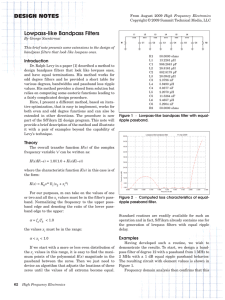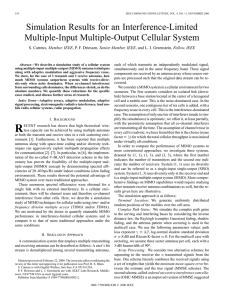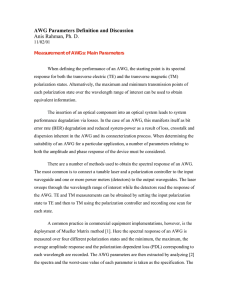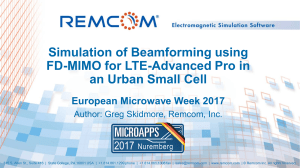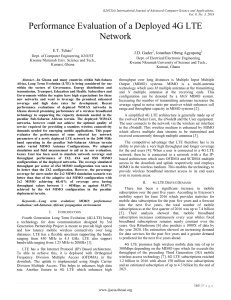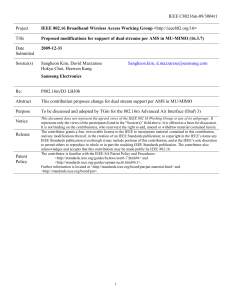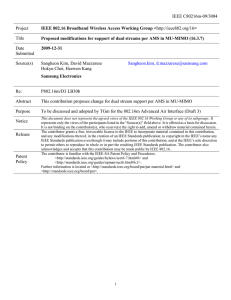WTTM_8515_response.doc
advertisement
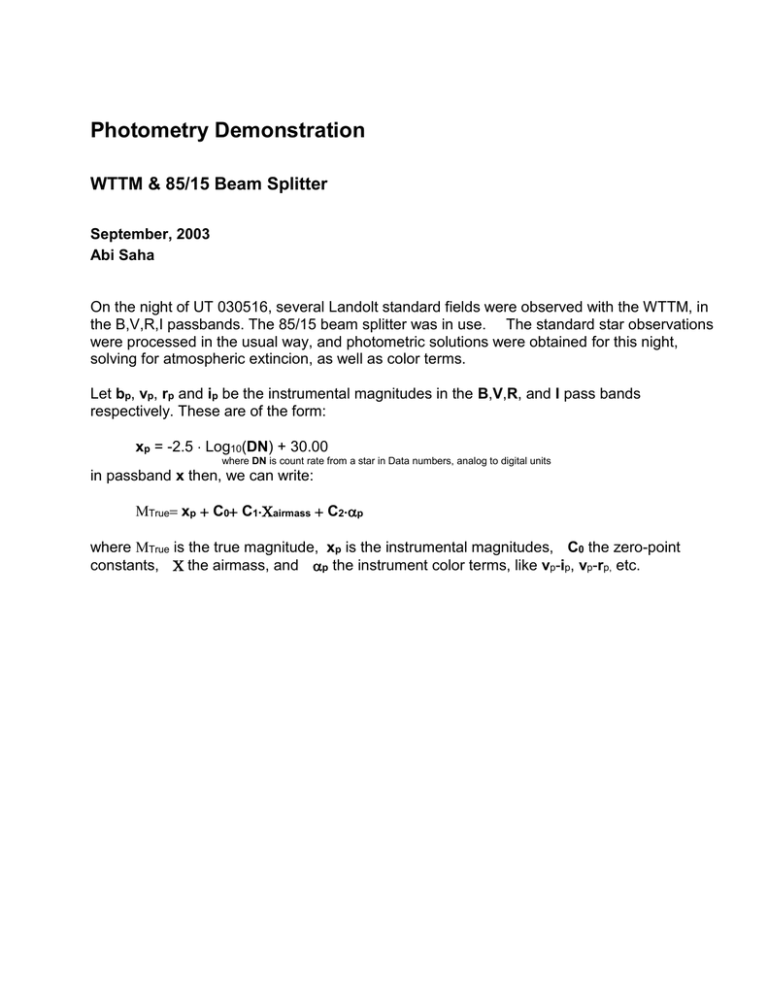
Photometry Demonstration WTTM & 85/15 Beam Splitter September, 2003 Abi Saha On the night of UT 030516, several Landolt standard fields were observed with the WTTM, in the B,V,R,I passbands. The 85/15 beam splitter was in use. The standard star observations were processed in the usual way, and photometric solutions were obtained for this night, solving for atmospheric extincion, as well as color terms. Let bp, vp, rp and ip be the instrumental magnitudes in the B,V,R, and I pass bands respectively. These are of the form: xp = -2.5 Log10(DN) + 30.00 where DN is count rate from a star in Data numbers, analog to digital units in passband x then, we can write: Truexp C0 C1airmass C2p where True is the true magnitude, xp is the instrumental magnitudes, C0 the zero-point constants, the airmass, and p the instrument color terms, like vp-ip, vp-rp, etc. The solution for the night of UT030516 are then the coeffs C0, C1, and C2 which were determined for all filters and all possible color combinations. The full solution is given immediately below: UT 030516 WTTM 85/15 beam splitter p Passband C0 C1 C2 Rmsres Errmean V V V bp-vp vp-rp vp-ip -4.548 -4.593 -4.603 -0.178 -0.170 -0.193 -0.148 -0.176 -0.089 0.012 0.021 0.020 0.003 0.005 0.005 B B B bp-vp bp-rp bp-ip -4.434 -4.418 -4.387 -0.386 -0.379 -0.371 0.208 0.109 0.076 0.019 0.022 0.021 0.005 0.006 0.005 R R R bp-rp vp-rp rp-ip -4.889 -4.902 -4.920 -0.016 -0.016 -0.043 -0.053 -0.115 -0.117 0.017 0.017 0.018 0.005 0.005 0.005 I I I vp-ip bp-ip rp-ip -5.338 -5.334 -5.362 -0.107 -0.106 -0.097 -0.019 -0.012 -0.041 0.011 0.011 0.011 0.003 0.003 0.003 Rms residuals are 0.02 mag or less, which is typical of a clear (but not pristine photometric) night. The extinction coefficients are also typical of a clear night, but on pristine nights they are up to 30% smaller. WTTM Count Rates & MiniMo For a star of zero intrinsic color and B=V=R=I=20.0, we can surmise the count rate in photons per second from the above, given that the `gain' was set to 1.33 electrons per DN. These rates are derived to be: Passband B V R I WTTM Count rate MiniMo Count rate (photons/s) (photons/s) 221 205 150 97 284 295 321 170 On the night of UT030602, a similar calibration was done with MIMO, with a `gain' setting of 1.4 electrons per DN. This night was only 21 nights after the WTTM data discussed above -and the telescope mirrors and optics can be assumed to be in an equivalent state for reflectance and scattering. Thus, a comparison of count rates between the MIMO results of UT030602 with WTTM results from UT030516 is meaningful comparison of throughput. The count rates derived from MIMO observations on UT030602 (for a star with B=V=R=I=20.0 mag) are included in the table above. Thus the comparative throughput in WTTM85/15 vs MIMO are: 0.78 in B 0.69 in V 0.47 in R 0.57 in I These differences INCLUDE the effect of the extra reflections to get the light into WTTM, as well as the reflections within the WTTM. They also reflect any passband and filter throughput differences. Below are data showing the CCD QE response for WTTM and MiniMo along with the broadband transmission data for each filter set.


